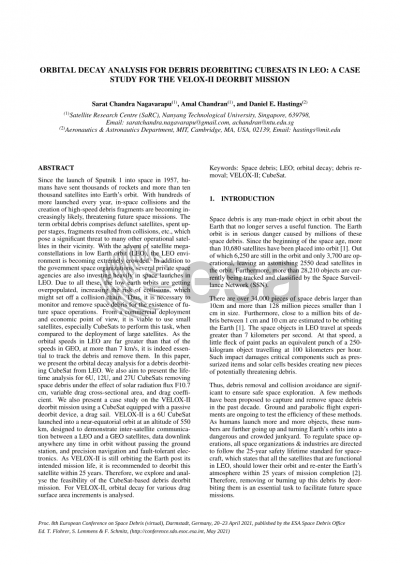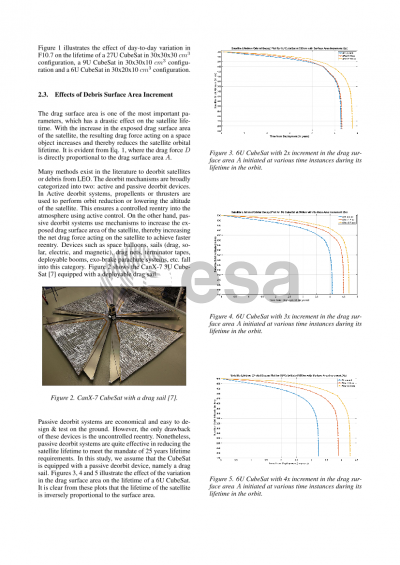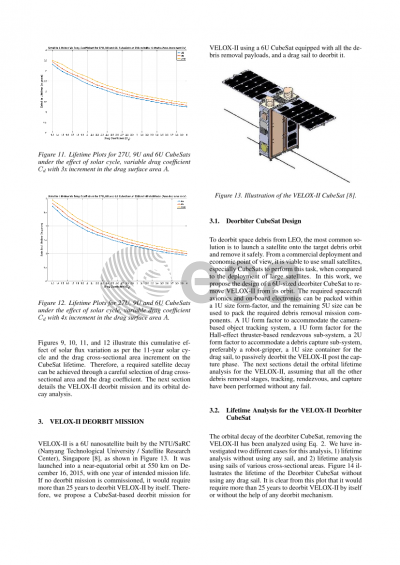Document details

Abstract
Since the launch of Sputnik 1 into space in 1957, humans have sent thousands of rockets and more than ten thousand satellites into Earth’s orbit. With hundreds of more launched every year, in-space collisions and the creation of high-speed debris fragments are becoming increasingly likely, threatening future space missions. The term orbital debris comprises defunct satellites, spent upper stages, fragments resulted from collisions, etc., which pose a significant threat to many other operational satellites in their vicinity. With the advent of satellite mega-constellations in low Earth orbit (LEO), the LEO environment is becoming extremely crowded. In addition to the government space organizations, several private space agencies are also investing heavily in space launches in LEO. Due to all these, the low earth orbits are getting overpopulated, increasing the risk of collisions, which might set off a collision chain. Thus, it is necessary to monitor and remove space debris for the existence of future space operations. From a commercial deployment and economic point of view, it is viable to use small satellites, especially CubeSats to perform this task, when compared to the deployment of large satellites. As the orbital speeds in LEO are far greater than that of the speeds in GEO, at more than 7 km/s, it is indeed essential to track the debris and remove them. In this paper, we present the orbital decay analysis for a debris deorbiting CubeSat from LEO. We also aim to present the lifetime analysis for 6U, 12U, and 27U CubeSats removing space debris of variable mass under the effect of solar radiation flux F10.7 cm, variable drag cross-sectional area, and drag coefficient. We also present a case study on the VELOX-II deorbit mission using a CubeSat equipped with a passive deorbit device, a drag sail. VELOX-II is a 6U CubeSat launched into a near-equatorial orbit at an altitude of 550 km, designed to demonstrate inter-satellite communication between a LEO and a GEO satellites, data downlink anywhere anytime in orbit without passing the ground station, and precision navigation and fault-tolerant electronics. As VELOX-II is still orbiting the Earth post it’s intended mission life, it is recommended to deorbit this satellite within 25 years. Therefore, we explore and analyse the feasibility of the CubeSat-based debris deorbit mission. For VELOX-II, orbital decay for various drag surface area increments and drag coefficients is analysed.
Preview







